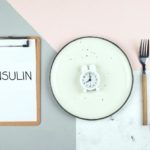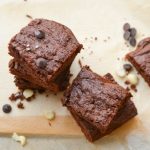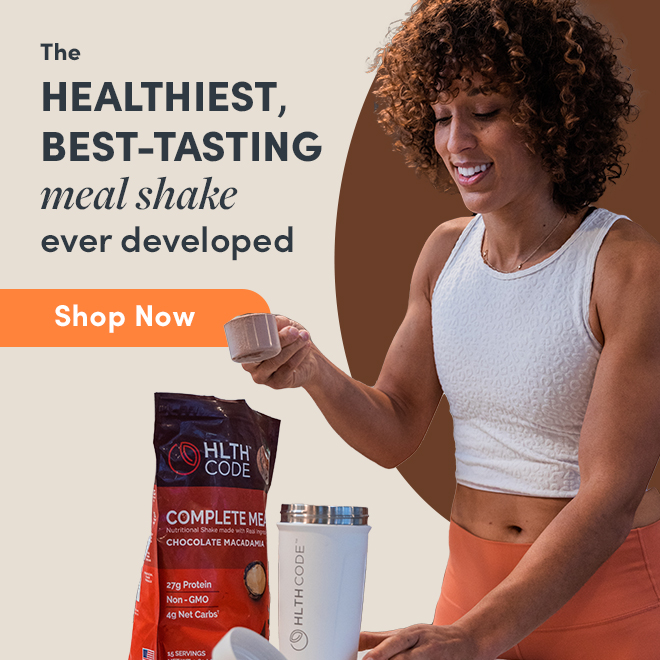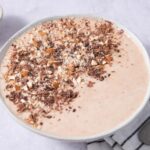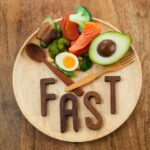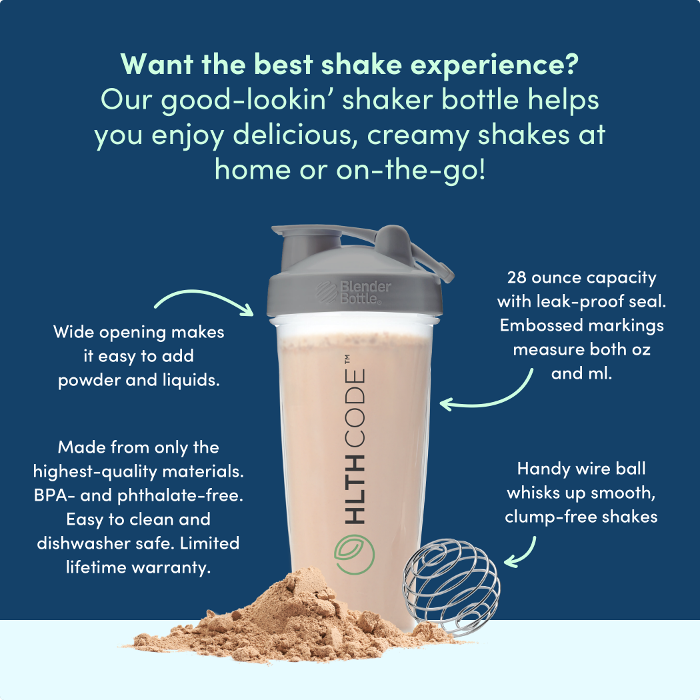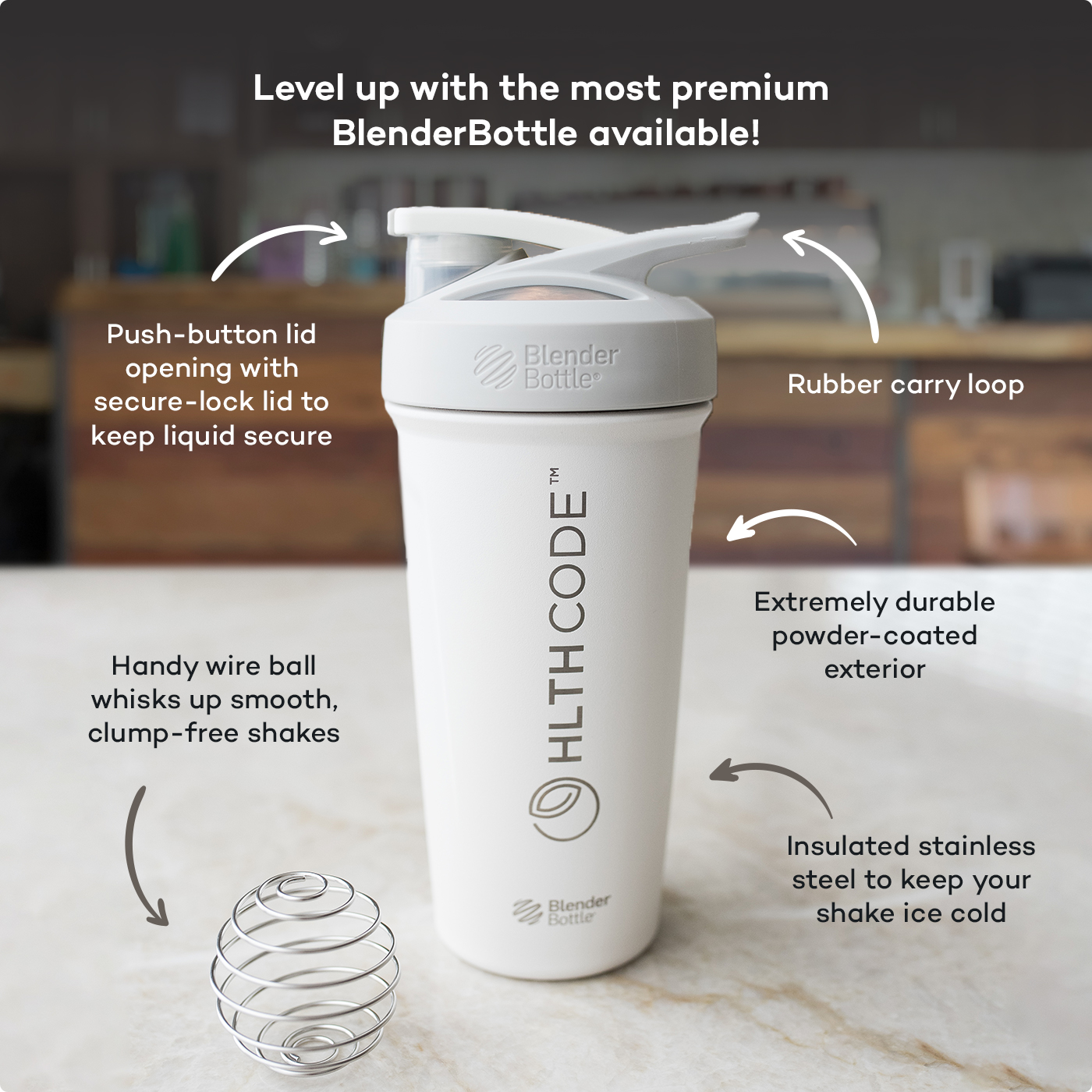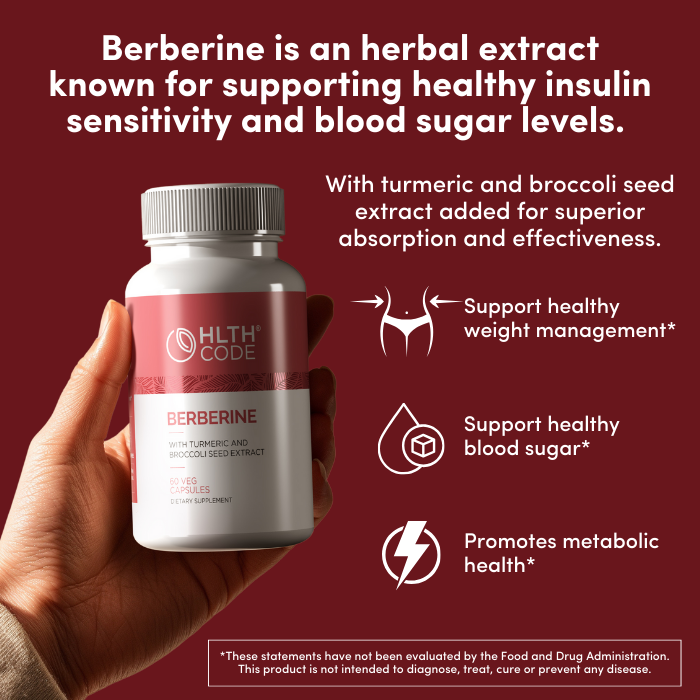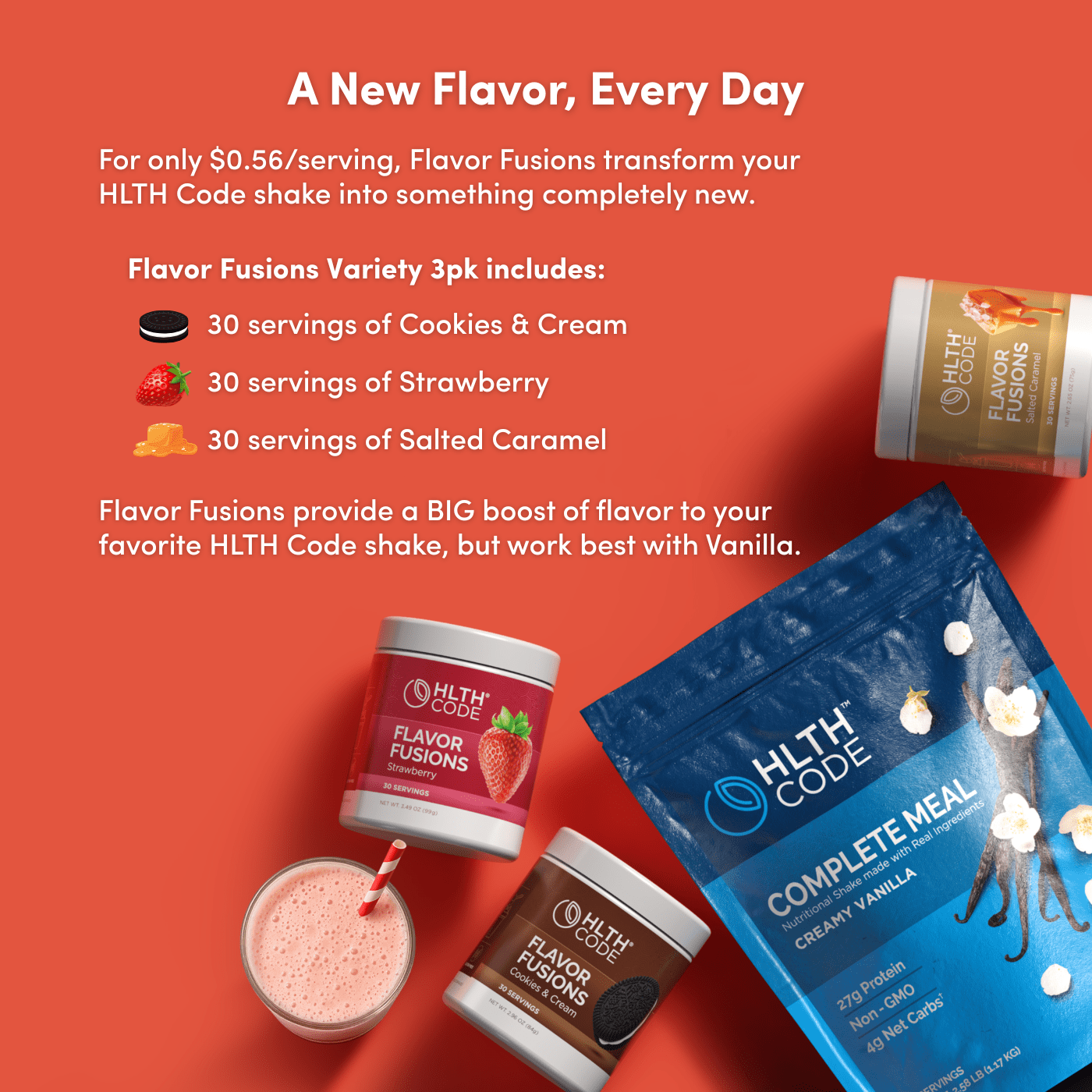Beat Hunger With These Foods

Years ago, like most Americans, I consistently ate cereal for breakfast. Over time, I noticed I usually got hungry about one or two hours later.
One day while I was in podiatry school, I ate an avocado for breakfast instead, and I noticed something. That morning, I didn’t get hungry again until lunch time. So it got me thinking.
I suspected the high fat content of the avocado–along with the fiber–was probably what kept me satisfied.
After that, I started paying more attention to what types of foods would keep me full. And I made some connections with concepts I had learned in biochemistry and physiology classes, about satiety.
With that in mind, today I’ll walk you through the three major macronutrients (carbs, fat, and protein). I’ll explain which ones are the most satiating, and why.
Ultimately I think understanding this information will help you optimize your nutrition, manage your weight, and improve your health.
Let’s get started.
Protein is the Satiety King
As a category, protein is probably the most satiating macronutrient.
Why does protein keep you full?
First of all, when you eat something with protein in it, your stomach empties out more slowly. That’s because of a hormone called cholecystokinin (CCK) [1], which detects protein or fat coming out of the stomach, and tells the stomach to slow down so your intestines can keep up.
As a bonus, CCK also suppresses appetite.
Protein activates some other satiety hormones as well, such as peptide YY [2]. Furthermore, one study demonstrated that protein produces a larger and more sustained release of peptide YY compared to carbs, meaning it controls your appetite longer [3]. In the same study, a high-protein meal kept ghrelin (often called the “hunger hormone”) down much longer than a carb-heavy meal, meaning you’d be less likely to get hungry after eating the protein.
For the protein, the satiety wins just keep coming. 🙂
Keep in mind, a “whole food” version of protein takes longer to digest, which increases your overall satiety.
Some of the best dietary sources of protein include: Meat, fish, poultry, eggs, dairy, nuts, & seeds.
For optimal satiety, try to make sure you include some good protein sources with each meal.
Fat is the Satiety Queen
If protein is the most satisfying category overall, fat is probably a close second.
Like protein, dietary fat also stimulates CCK, which slows down your stomach emptying and stimulates satiety.
In addition, some of the fat you consume may turn into ketones, which have an appetite suppressing effect. [4]
I mentioned protein may be a little more satiating than fat.
But here’s the thing-
In nature, protein and fat most often come together. So if you’re eating a natural protein source, it usually has plenty of fat in it as well. Like the meat, fish, poultry, eggs, dairy, nuts, and seeds I mentioned above.
On a related note, HLTH Code shakes also do a nice job of combining protein and fat together, which means you’re getting the best of both worlds. (They also have quite a bit of fiber–more on that below.)
Personally I’ve found when I drink those shakes, I don’t get hungry for quite a while afterwards. So they’re obviously doing something right when it comes to satiety.
Carbs are a Mixed Bag for Satiety
Here’s the thing about carbs-
If you were to eat totally unprocessed sources of carbohydrates, they would actually keep you full for quite a while in most cases. But hardly anyone does that nowadays.
For example, when was the last time you saw somebody eat a bowl of wheat berries?
That’s what I thought.
Instead, it’s white bread, cereal, pancakes, crackers, chips, french fries, pizza, juice, soda, desserts, candy and the list goes on and on.
When it comes to satiety, that type of food is basically the worst.
It’s also a major driver of insulin resistance, diabetes, and other related diseases. If you’d like to understand why, try reading Dr. Bikman’s book, Why We Get Sick.
Refined Carbohydrates Make You Get Hungry Sooner
There’s a simple but important reason why processed carbs make you hungrier. Important enough that Dr. David Ludwig wrote a whole book about it.
Basically, the processed carbs give you a blood sugar spike, which then comes crashing down, and even goes a little bit lower than what you’re used to. That makes you feel hungry.
Carbs also don’t suppress ghrelin (that “hunger hormone”) very long – maybe for about one hour according to the study I referenced earlier.[3]
So eating processed carbs gives you no lasting satiety, and may actually increase your hunger before long. That’s what I call a double whammy.
Remember my cereal example from the intro?
Typically after eating refined carbs like cereal, you’ll get hungry about one or two hours later because of that rapid rise and fall in your blood sugar.
Redeeming Qualities of Carbs
How can you eat carbs and NOT be always hungry?
Choose the unprocessed varieties, and the ones that get digested more slowly.
For example:
Nuts, seeds, and avocados have pretty decent carb content, but it’s tightly packed and doesn’t get digested very quickly.
Similarly, eating whole fruit is a much better option than drinking juice, because it will take quite a bit longer to digest the sugar in the fruit. (But obviously for some people with diabetes or severe insulin resistance, even whole fruit can be an excessive sugar load.)
Lastly, there’s something called a resistant starch, which may actually be one of the most satiating foods of all, as Marty Kendall explained in this podcast episode.[5]
What is Resistant Starch?
The most famous example is if you cook potatoes, and then cool them in the fridge. The cooling process causes the starch to create some new molecular bonds that make it much harder to digest. So much so that some of it goes through your gut without ever being digested.
That’s one reason potato salad could be a much healthier option than french fries.
Another example is green bananas. Before they become ripe, they have quite a bit of resistant starch. Once they ripen, the resistant starch goes away.
People don’t tend to eat very much resistant starch, but it is something interesting to be aware of if you are thinking about the healthiest carbs to eat.
Fiber also Helps
Another potential benefit of carbs is that they can be high in fiber.
Fiber tends to help increase satiety by stretching your stomach, and by slowing down stomach emptying as well.[6]
There are many different types of fiber, and some have a bigger impact on satiety than others. As with most foods, your best bet is to pick something that’s relatively natural and unprocessed.
Where to Go from Here
Hopefully it’s now clear that you’ll stay full longer if you:
-
- Mostly avoid processed carbs
- Generally stick to unprocessed foods
- Get plenty of protein and fat in your diet
If you’re wondering about some more specific foods, I created a long list of keto food options on my blog, which also happen to be mostly unprocessed. Several of them are great options for long-lasting satiety.
And if you need a high protein, high fat, high fiber, low carb shake in a pinch….
I think you know where to find them. 😉
Summary & Final Thoughts
The type of food you eat has a major impact on satiety.
In other words, some types of food keep you full a lot longer than others.
In general, it’s best to stick with unprocessed “whole” foods, because these take longer to digest, and keep your stomach full longer.
Protein and fat are typically more satiating than carbs. And as a bonus, protein and fat usually come together in nature.
Do your best to avoid refined sources of sugar or carbs, as these tend to spike your blood sugar and also make you get hungry within an hour or two after eating them.
With that in mind, take a few minutes to think about what you can do to improve your satiety today.
Optimizing satiety will make it easier to eat less frequently, easier to manage your weight, and ultimately easier to manage your blood sugar and improve insulin resistance.
By doing that, you can prevent a whole lot of harmful downstream effects.
Ben Tanner has worked as a PA (similar to a doctor) since 2014 in the ER, family practice, and urgent care. He now shares info about fasting and nutrition via his blog and podcast, hoping to prevent some of the health problems he treats during his day job. You can find his blog at fastingwell.com
References
- https://en.wikipedia.org/wiki/Cholecystokinin
- https://pubmed.ncbi.nlm.nih.gov/16950139/
- https://pubmed.ncbi.nlm.nih.gov/19820013/
- https://www.ncbi.nlm.nih.gov/pmc/articles/PMC5813183/#:~:text=The%20ketones%20d%E2%80%90%CE%B2%E2%80%90hydroxybutyrate,caused%20by%20elevated%20blood%20ketones.
- https://lowcarbmd.com/episode-161-marty-kendall
- https://pubmed.ncbi.nlm.nih.gov/24901089/
This article is for informational and educational purposes only. It is not, nor is it intended to be substitute for professional medical advice, diagnosis, or treatment and should never be relied upon for specific medical advice.



